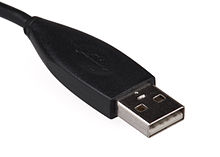A friend showed me a video from a Missouri news station
(from a newscast almost 3 years ago, mind you). In the video, the reporters
discuss a "new threat" with "new technology." While the video engages in the usual FUD
(fear, uncertainty, and doubt) to oversell the risk, there is a nugget of truth
that bears repeating.
Smartphones, tablets, and many standalone digital cameras
have a GPS built-in, and can "geo-tag" photos with the location at
which they were taken. This can make it easy to group photos by location (as
in, group all my photos from the Grand Canyon, or from Disney World, or from
Jamaica ... assuming I had vacationed at any of these places). But it makes it
equally easy for someone else to do the same.


 A while back, I bought a Seagate “FreeAgent GoFlex Home” network-attached storage (NAS) device - essentially a hard drive with a network port that does not need to be connected to a computer. I had two goals in mind: my digital music collection had outgrown the old PC I use for that purpose, and backups of my various home PCs were a haphazard mess. I could have spent several hundred dollars on a new computer to serve this purpose, but I thought I'd try something new and try my luck with a ~$150 NAS device.
A while back, I bought a Seagate “FreeAgent GoFlex Home” network-attached storage (NAS) device - essentially a hard drive with a network port that does not need to be connected to a computer. I had two goals in mind: my digital music collection had outgrown the old PC I use for that purpose, and backups of my various home PCs were a haphazard mess. I could have spent several hundred dollars on a new computer to serve this purpose, but I thought I'd try something new and try my luck with a ~$150 NAS device.

